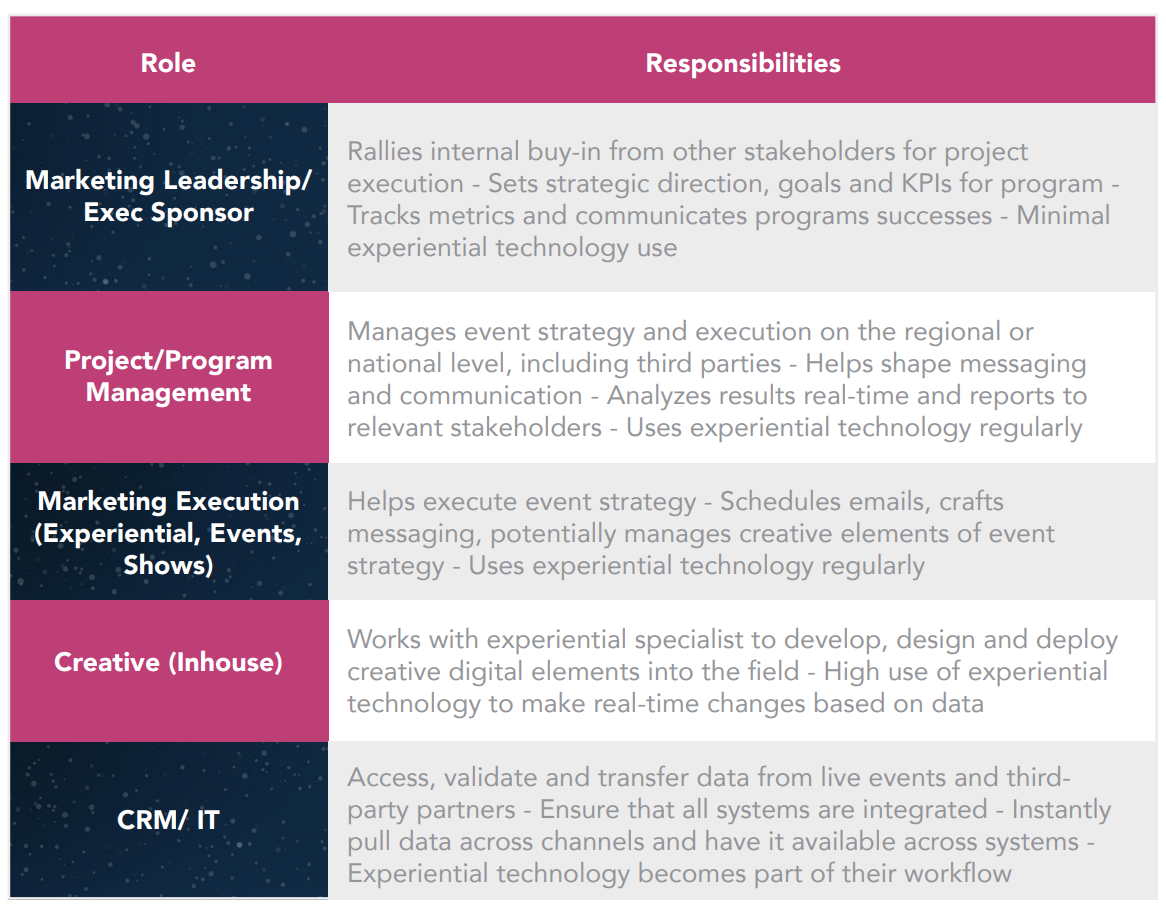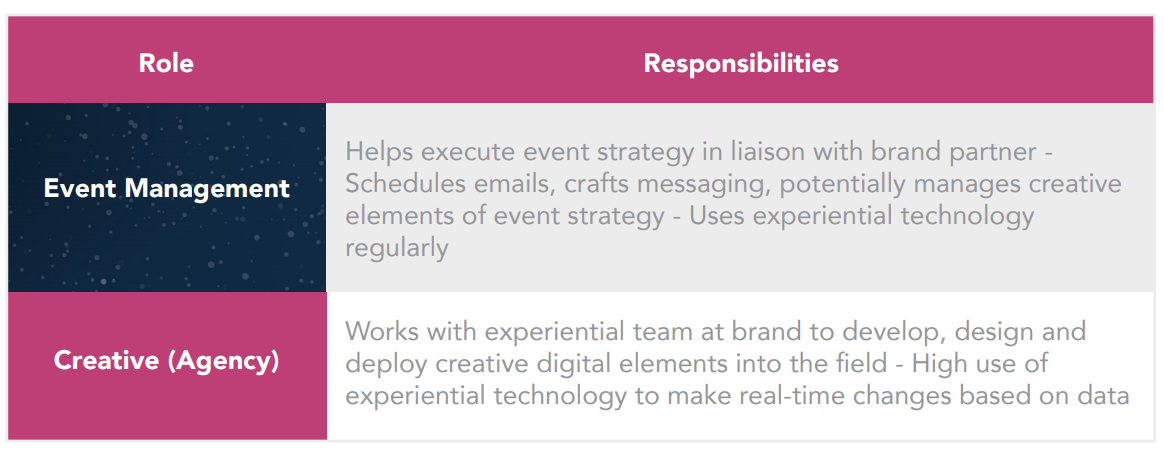Beyond Experiential Marketing Technology: People for Success
.png?width=50&name=download%20(1).png) By
Julia Manoukian
·
3 minute read
By
Julia Manoukian
·
3 minute read
Why do great ideas work for some people and not others? The same questions apply to the implementation of new technology at the brand level, and there are entire industries devoted to searching for answers. Due to the complexity of it all, experiential marketing has been one of those business concepts that company leaders tend to consider either massively productive or sorely disappointing.
Just look at facts:
- 8 out of 10 marketers surveyed say that great experiential campaigns are “critical to their company’s success.”
- More than 90 percent of consumers chose in-person events over TV ads as the channel with the most influence on buying behavior.
- Customer with great experiences spend 140 percent more on average.
- Industry leaders have identified experiential marketing as “a rare bright spot in the ad world.”
Yet at the same time, many small and mid-sized experiential and event marketing teams are struggling to prove ROI and justify their budgets. The simple explanation for this disconnect is that excellence in execution makes all the difference.
3 Fundamentals for Experiential And Offline Marketing Success
There's no question that some brands see much higher performance impacts from experiential for a wide variety of reasons, such as the character of the industry, market trends at the moment and the company’s individual talent mix of talent and software.
However, there are certainly fundamental components that must work together smoothly as a foundation. Beyond the right creative talent to build engaging campaigns and the right tech stack to measure performance for iterative improvement, you need the right management team to pull it all together in the most effective way.
We’ve put together an overview of the roles, responsibilities and skillsets required to make an experiential marketing technology investment really pay off.
Skill Sets for Experiential and Offline Marketing Success
Experiential marketers and marketing leaders win when the incorporate skills from fields not traditionally associated with offline marketing, including:
Analytics – To be comfortable in reviewing data and making updates to events in real-time. They should be able to access a dashboard of metrics so they can know what's working and what's not. They should be able to apply the data to know where to double down and where to pull back in real time. Marketers surveyed plan to spend 73 percent more on analytics over the next three years.
Strategy – To see the big picture, how one event ties into the consumer journey at large and offline marketing as a whole
Collaboration – To easily coordinate campaign data with information from the CRM, third parties like agencies and other stakeholders need to build a functional 360 degree view of their consumers. Organizations that do outperform peers by 85 percent in sales growth.
Learning/Unlearning – To be open to new processes and constant innovation, which involves letting go of old processes that no longer work. To stay competitive in the future of work, companies need to hire flexible talent and upskill them as technology changes.
Data hygiene – To pull back and see the big picture of how all data ladders up into the consumer experience. They should be able to connect the dots on how data cleanliness and timelines affects the consumer experience.
Project management – To stay on track with being goal-oriented but patient. They should see the need for all channels and systems to be integrated but understands there are reasons behind what others tend to see as “red tape.” Companies that value project management see 50 percent fewer failures than their peers.
Internal Team: Roles and Responsibilities
Breaking the execution team down more granularly, here are some characteristics of winning teams.

Marketing leader
Rallies internal buy-in from other stakeholders for project execution. Sets strategic direction, goals and KPIs for the program. Tracks metrics and communicates successes to the rest of the team.
Project/Program manager
Manages event strategy and execution on the regional or national level, including third parties. Helps shape messaging and communication. Analyzes results in real time and reports to relevant stakeholders. Uses experiential technology regularly.
Marketing execution
Helps execute event strategy. Schedules emails, crafts messaging, potentially manages creative elements of event strategy. Uses experiential technology regularly.
Creative
Works with experiential specialist to develop, design and deploy creative digital elements into the field. High use of experiential technology for real time changes based on data.
CRM/IT
Access, validate and transfer data from live events and third party partners. Ensure that all systems are integrated. Instantly pull data across channels and make it available across systems. Makes experiential technology part of the workflow.
External Team: Roles and Responsibilities

The external team is tasked with making live events happen in the real world, with all the uncertainty and on-the-spot decision making that entails. They mirror the set up of the internal team with a few important differences.
Event management
Helps execute event strategy in liaison with brand partners. Schedules emails, crafts messaging, potentially manages creative elements of event strategy. Uses experiential technology regularly.
Creative
Works with experiential team at the brand to develop, design and deploy creative digital elements into the field. High use of experiential technology for real time changes based on data.
A Sum of All Parts
The central message is that there are three areas that need roughly equal attention in order to make experiential marketing campaigns deliver the kind of results that can improve the financials of the organization as a whole. Those three areas are: 1) creative development, 2) software for accurate performance measurement and 3) a management team prepared to deploy the various components in the right measures at the right time.


